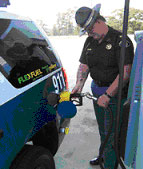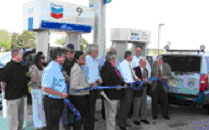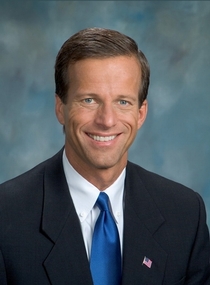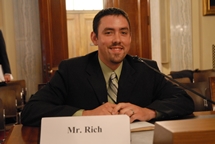 The General Motors Police Package Tahoe was featured and demonstrated to the crowd at the grand opening of a new E85 station in Georgia on May 1. The Fillers/Chevron facility is the seventh E85 site to open in the state, according to the National Ethanol Vehicle Coalition.
The General Motors Police Package Tahoe was featured and demonstrated to the crowd at the grand opening of a new E85 station in Georgia on May 1. The Fillers/Chevron facility is the seventh E85 site to open in the state, according to the National Ethanol Vehicle Coalition.

Middle Georgia Clean Cities Coalition Executive Director Charise Stephens said, “Our goal is to have General Motors E85 Police Tahoe in each of our counties and the fuel to sustain the program. Currently Middle Georgia has more biofuel stations than any other part of the state and we look forward to having the first E85 Police fleets in the state.”



 The students’ use of a less polluting fuel in the contest caught the attention of the
The students’ use of a less polluting fuel in the contest caught the attention of the 
 U.S. Senator John Thune (R-South Dakota) will hold a wind energy roundtable this coming Monday, May 14th at 1:00 PM (CDT) at the Sheraton Hotel in Sioux Falls.
U.S. Senator John Thune (R-South Dakota) will hold a wind energy roundtable this coming Monday, May 14th at 1:00 PM (CDT) at the Sheraton Hotel in Sioux Falls.  Drivers along a stretch of Interstate 15 in Utah might be used to seeing biodiesel-powered vehicles, but the same stretch of road is becoming home to the raw materials used to make biodiesel.
Drivers along a stretch of Interstate 15 in Utah might be used to seeing biodiesel-powered vehicles, but the same stretch of road is becoming home to the raw materials used to make biodiesel.  Houston-based Gulf Hydrocarbon, Inc, the top provider of biodiesel for the petroleum industry, is adding red dye to some of its biodiesel at its terminal in Houston. So why the red dye?
Houston-based Gulf Hydrocarbon, Inc, the top provider of biodiesel for the petroleum industry, is adding red dye to some of its biodiesel at its terminal in Houston. So why the red dye? “Developing wind power, a ‘no-CO2’ energy source, can help to solve our global warming problems,” said Howard A. Learner, Executive Director of the Environmental Law & Policy Center. “Renewable energy is a win-win-win—it’s good for farmers, good for rural economic development and good for the environment.
“Developing wind power, a ‘no-CO2’ energy source, can help to solve our global warming problems,” said Howard A. Learner, Executive Director of the Environmental Law & Policy Center. “Renewable energy is a win-win-win—it’s good for farmers, good for rural economic development and good for the environment. The National Biodiesel Board today called on Congress to put pro-biodiesel provisions in the new Farm Bill, including a Biodiesel Incentive Program and Biodiesel Fuel Education Program. According to
The National Biodiesel Board today called on Congress to put pro-biodiesel provisions in the new Farm Bill, including a Biodiesel Incentive Program and Biodiesel Fuel Education Program. According to  “The construction of our biodiesel facility is the direct result of the successful programs from the 2002 Farm Bill,” said Rich of the plant that created 14 high-quality jobs in Southeastern Iowa to allow it to produce 10 million gallons of cleaner burning biodiesel annually. “Biodiesel should be a significant part of the 2007 Farm Bill.”
“The construction of our biodiesel facility is the direct result of the successful programs from the 2002 Farm Bill,” said Rich of the plant that created 14 high-quality jobs in Southeastern Iowa to allow it to produce 10 million gallons of cleaner burning biodiesel annually. “Biodiesel should be a significant part of the 2007 Farm Bill.” Will Steger is now half way through the
Will Steger is now half way through the